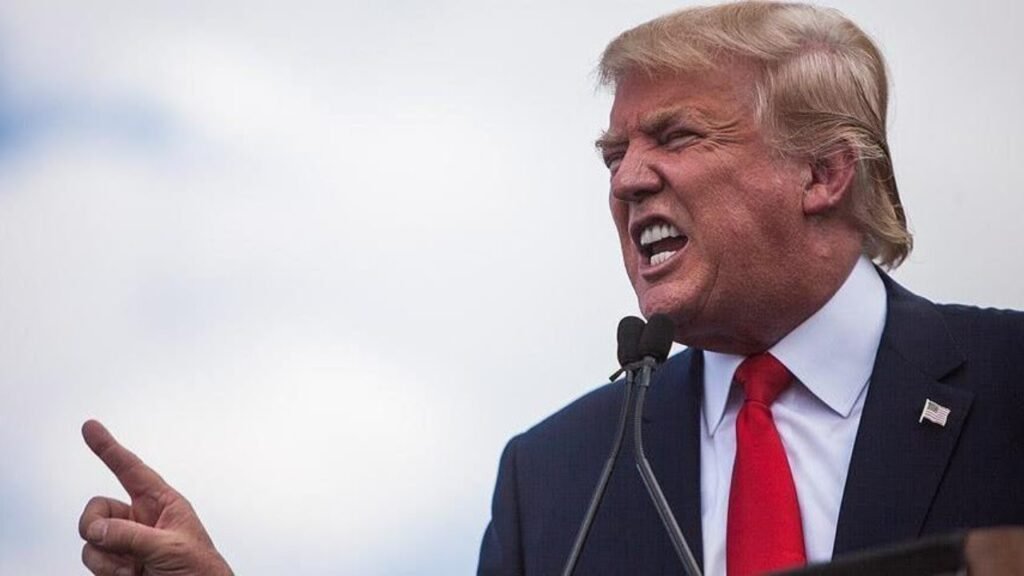America Threat to the Taliban History, Geopolitics, and Afghanistan’s Future
The relationship between the United States and the Taliban has been one of the most complex and consequential in modern global history. From the Taliban’s rise in the 1990s to the attacks of September 11, 2001, and the U.S led invasion of Afghanistan, this relationship has been marked by conflict, negotiation, and strategic maneuvering. The U.S. sought to dismantle terrorist networks while building a democratic Afghan government, yet two decades of war demonstrated the resilience of the Taliban and the limits of military intervention.

The Taliban emerged during Afghanistan’s civil war, capitalizing on the chaos left after the Soviet withdrawal. Composed largely of religious students and militants, they quickly gained control over major regions, promising order through strict enforcement of Islamic law. By 1996, they had captured Kabul, establishing a regime characterized by harsh punishments, suppression of women’s rights, and persecution of political opponents. Initially, the United States viewed the Taliban as one faction among many, but relations deteriorated when the group provided sanctuary to Osama bin Laden and Al-Qaeda. Repeated U.S. warnings to expel terrorist operatives went unheeded, culminating in the tragic events of 9/11.
The September 11 attacks fundamentally changed the geopolitical landscape. Nearly 3,000 lives were lost in coordinated terrorist attacks, and the world’s attention turned to Afghanistan. In October 2001, the U.S., supported by NATO allies, launched Operation Enduring Freedom, aiming to dismantle Al-Qaeda and remove the Taliban from power. Despite swift initial successes, the Taliban continued to operate as an insurgency, using rural strongholds, tribal allegiances, and support networks in Pakistan to resist U.S. and Afghan government forces.
Over the next two decades, the war in Afghanistan became a complex struggle of military, political, and humanitarian dimensions. The U.S. objectives included eradicating terrorism, building democratic institutions, and stabilizing the country. However, the Taliban’s survival was aided by corruption within the Afghan government, weak institutional capacity, and the diversion of U.S. attention to other global conflicts. The human cost was immense: thousands of American soldiers died, hundreds of thousands of Afghan civilians were killed, and trillions of dollars were spent on military operations and reconstruction. Yet, the Taliban remained resilient and deeply embedded in Afghan society.
In 2020, the Doha Agreement was signed between the U.S. and the Taliban, outlining conditions for U.S. withdrawal, Taliban commitments to counterterrorism, and engagement in intra-Afghan negotiations. Despite these provisions, the Taliban did not fully comply. When the U.S. completed its withdrawal in August 2021, the Afghan government collapsed rapidly, and the Taliban regained control of Kabul. The swift takeover highlighted the fragility of Afghanistan’s political institutions and raised questions about the effectiveness of U.S strategies over the preceding twenty years.
Following their return to power, the Taliban faced immediate challenges in governance and economic management. In response, the United States imposed multiple threats to influence Taliban behavior. Economic sanctions, including the freezing of billions of dollars in Afghan central bank assets, significantly limited the regime’s ability to govern and forced reliance on alternative revenue sources such as taxation, illicit trade, and foreign aid. Drone strikes continued to target terrorist operatives within Afghanistan, exemplified by the 2022 killing of Al-Qaeda leader Ayman al-Zawahiri, demonstrating the U.S continued operational reach and signaling consequences for harboring international terrorists.
Diplomatic isolation also played a critical role. By withholding recognition and encouraging other nations to do the same, the U.S. restricted Afghanistan’s participation in international economic and political systems. Additionally, the Taliban faced ongoing pressure to respect human rights, particularly the rights of women to education and employment, under threat of further sanctions and loss of potential international support.
The Taliban’s response to these pressures has been a combination of public defiance and pragmatic adaptation. While publicly rejecting U.S. influence, the group has sought closer ties with countries such as China, Russia, Iran, and Pakistan to secure funding and strategic support. It has also expanded revenue-generating activities, including drug trafficking and mining operations, to compensate for the loss of access to international banking systems. The Taliban’s approach demonstrates a careful balance between asserting independence and managing the practical realities of governance under pressure.
The consequences of this standoff extend far beyond Afghanistan’s borders. Regional stability in South Asia is directly affected, with India concerned about the potential for cross-border terrorism, Pakistan navigating the dual role of ally and neighbor, and China seeking access to Afghanistan’s mineral resources while addressing security concerns in Xinjiang. The Taliban’s ideological influence could extend to jihadist movements across the Middle East, while the humanitarian crisis within Afghanistan has worsened, leaving millions of civilians in poverty, food insecurity, and limited access to healthcare.
America’s threats to the Taliban reflect both the limits and the strengths of global power. While direct military engagement is constrained following withdrawal, financial influence, operational reach, and diplomatic leverage remain key tools in U.S. strategy. The Taliban cannot fully escape these pressures, yet the United States cannot fully dictate the trajectory of the regime. This dynamic creates a prolonged stalemate in which the balance of power is constantly tested, and the future of Afghanistan remains uncertain.
Looking forward, multiple scenarios are possible. The Taliban may moderate some policies to gain recognition and aid, or they may continue resisting international demands, resulting in a prolonged stalemate. Renewed conflict could emerge if terrorist networks gain traction, prompting targeted interventions. Geopolitical realignments may occur as the Taliban strengthens relations with China and Russia, reducing U.S. influence in the region. Each scenario carries profound implications for Afghanistan, its neighbors, and global security.
The ongoing tension between the United States and the Taliban underscores the complexities of modern geopolitics. America’s threats aim to prevent Afghanistan from becoming a base for terrorism while promoting human rights and stability. The Taliban’s survival reflects deep social roots, resilience, and the capacity to navigate international pressures. The future of Afghanistan, therefore, depends on the interplay of these forces, the decisions made by its leaders, and the responses of the global community.
The consequences of these developments are felt not only in political and security spheres but also in humanitarian and economic terms. Ordinary Afghans face the brunt of sanctions, lack of access to global financial systems, and deteriorating public services. Millions remain vulnerable to hunger, disease, and displacement. The ethical and strategic dilemmas posed by this situation highlight the enduring challenges of balancing security, diplomacy, and human welfare in conflict zones.
As global attention continues to focus on Afghanistan, the U.S Taliban standoff serves as a case study in the limits of power, the persistence of insurgent groups, and the complexities of international relations in a rapidly changing world. It emphasizes the need for nuanced strategies that consider historical, social, and economic dimensions in addition to military and political factors. The outcome of this engagement will shape regional stability, international security frameworks, and the prospects for peace and development in Afghanistan for years to come.
The story of America’s threats to the Taliban is ultimately a story of resilience, power, and the unpredictable consequences of international interventions. It reveals the challenges of confronting extremist ideologies, the difficulties of nation-building, and the profound effects of global politics on local populations. Afghanistan stands at a crossroads, and the interplay between U.S policies, Taliban governance, and regional actors will determine the trajectory of the country and the broader region.
The balance of pressure and adaptation between America and the Taliban continues to evolve, shaping not only the immediate future of Afghanistan but also influencing global strategic calculations. In this ongoing struggle, every decision, negotiation, and action carries consequences that extend far beyond the country’s borders, reflecting the interconnected nature of modern geopolitics.

